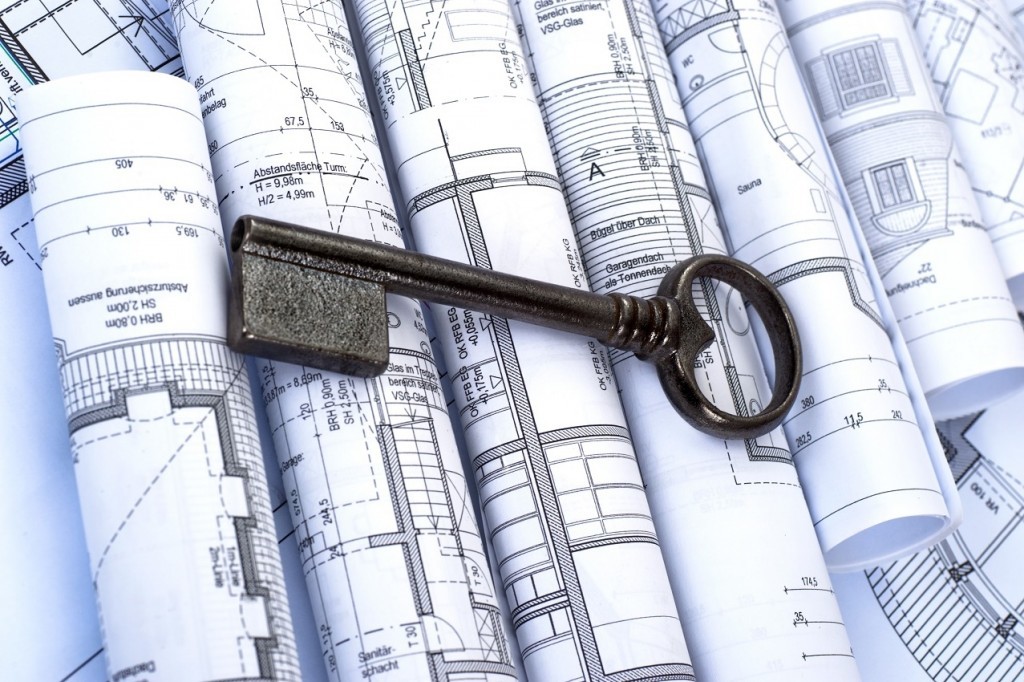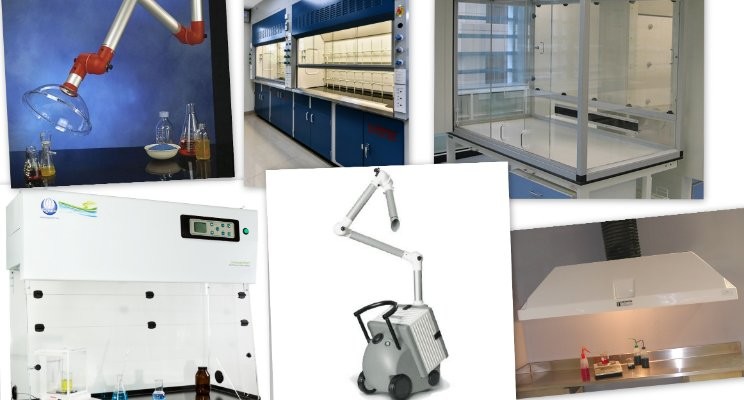In a research laboratory, you may need fume extraction systems to take care of chemical fumes. Every time, you need not install a fume hood, which consumes a lot of space and is also an energy hogging equipment. You have many options available. Depending on the type of reactions and safety protocols; you can decide which system can be most suitable.
This article briefly covers few options with its pros and cons.
1) Ducted Fume hoods:
Fume hoods are typically used for heavy fume generating reactions. These are fully featured enclosures which have various utilities and flow controls. It is a very important piece for user safety; but an expensive equipment in terms of running cost.
Standards: ASHRAE 110-2016, EN 14175:2003
Exhaust : 450-1050 cfm; depending on hood size.
Types: a lot of variety of sizes and options.
Advantages:
- Fume are completely removed from the workplace
- Low maintenance,
- Energy efficient if clubbed and used with VAV.
Limitations:
- Fixed and steady assembly as ductwork is involved.
- Less energy efficient in single use.
2) Ductless Fume hoods:
New generation of fume hoods; which have activated carbon filters to remove chemicals from fumes and re-circulate the cleaner air in the laboratory. These are available with most features of a regular fume hoods; and have several variants.
Standards: AFNOR NF X 15-211:2009, BS 7989: 2001, ASHRAE 110-2016
Exhaust: 450-1050 cfm; depending on hood size; but this air is re-circulated.
Types: Llimited variety of sizes and options.
Advantages:
- Ducting work eliminated,
- Simple plug and play mobile unit,
- 70% less running cost as compared to conventional fume hoods,
- Cheaper & faster installation
Limitations:
- Filter maintenance and disposal required,
- Limited application with carbon filter,
- Risk to chemical exposure while upon filter loading.
3) Enclosures:
These are small volume, no frills fume hoods with only 4 walls and exhaust arrangement. The four walls are made up of glass or acrylic/poly carbonate for full visibility. Enclosures won’t have any socket or tap. It only kept over a fume generating equipment and a small exhaust arrangement is made. This ensures that the fumes will be contained and exhausted, rather than spreading in the lab.
Exhaust volume : 200-600 cfm; depending on hood size.
Types: Built to suit.
Advantages:
- Better than spot extractors and canopy hoods.
- Easy access from front.
- Cable entry port is available.
Limitations:
- Not meant for heavy chemical reactions.
- More suitable for instrument labs.
4) Mobile extraction units:
A mobile suction and filtered equipped unit used for dust, fume and steam extraction which can be moved quickly wherever needed. The dust is then stored in the bag. In case of fumes, those are filtered through a carbon filter and re-circulated. This machine can be used like a portable vacuum cleaner.
Exhaust volume : 100-200 cfm
Types: only 2-3 models available
Advantages:
- Small, Mobile suction and filter system,
- Low noise, excellent ergonomics and handling.
- No ductwork and blower installation required.
Limitations:
- Can be used for small localized reactions only.
- Suitable for labs where ductwork is not possible.
5) Canopy Hoods
A fixed wall mounted or ceiling suspended exhaust fume extractors unit usually placed above the sink to extract acidic fume as generated by waste acids. Also, most popularly used above ovens or other steam generating equipment’s to extract their heat or steam generated. Made up of polypropylene or Stainless steel.
Exhaust volume : 600-900 cfm depending on hood size
Types: can be totally customized, built to suit.
Advantages:
- Suitable for hot-air steam extraction and for waste acid thrown in the sink.
Limitations:
- Considerably more space required (min-6 sq.ft.)
- The contaminants directly pass the users breathing zone.
6) Spot Extractors
A localized chemical resistance fume extraction mechanical arm used to maintain a clean working environment with a volume handling capacity of 100 cfm. Available in PP or aluminum.
Exhaust volume : 100-200 cfm depending on the type.
Types: Limited variety of sizes and options.
Advantages: Highly suitable for localized reactions (rotavapors etc)
Limitations: Limited working radius, max up to 6 feet.



